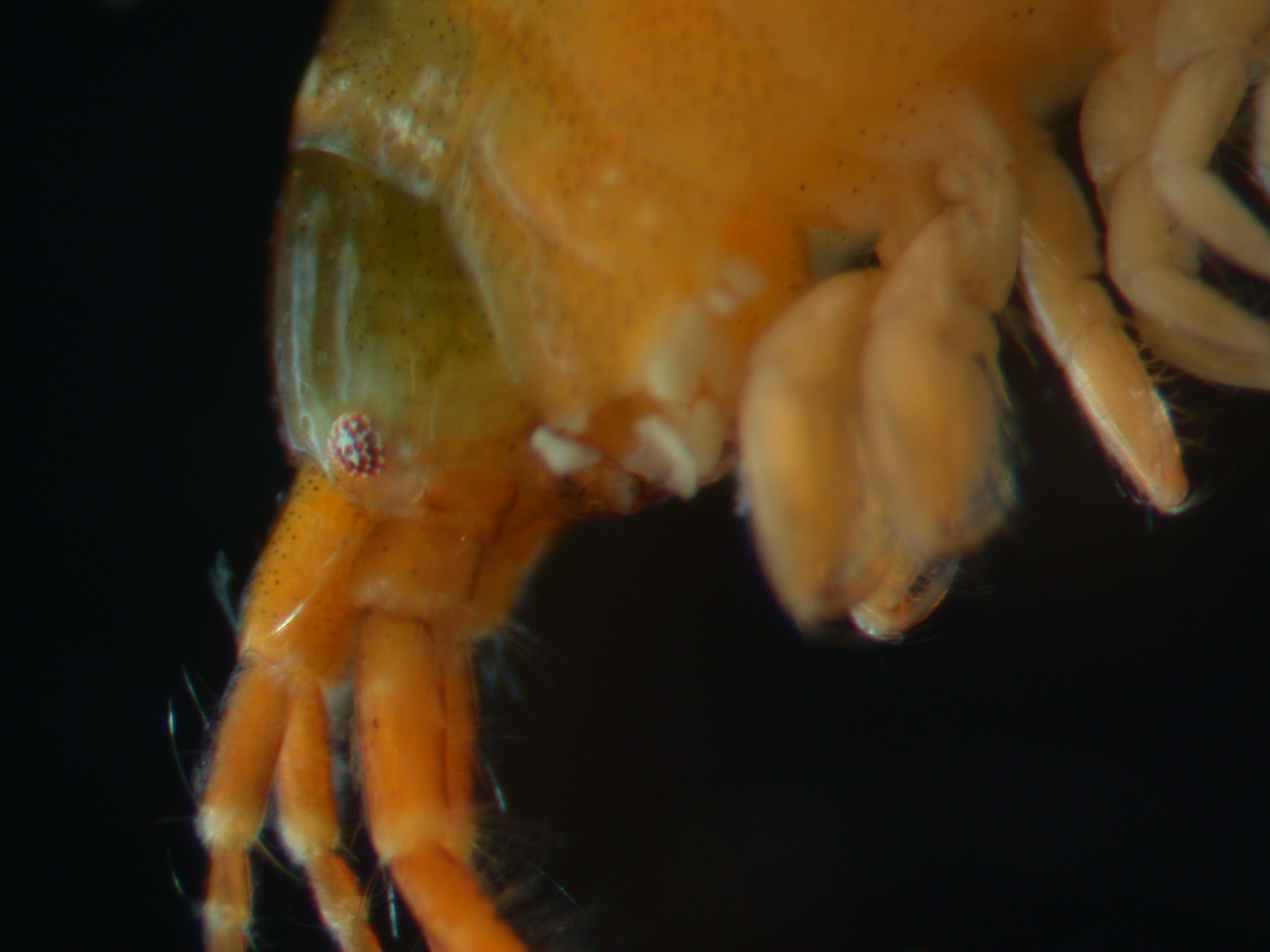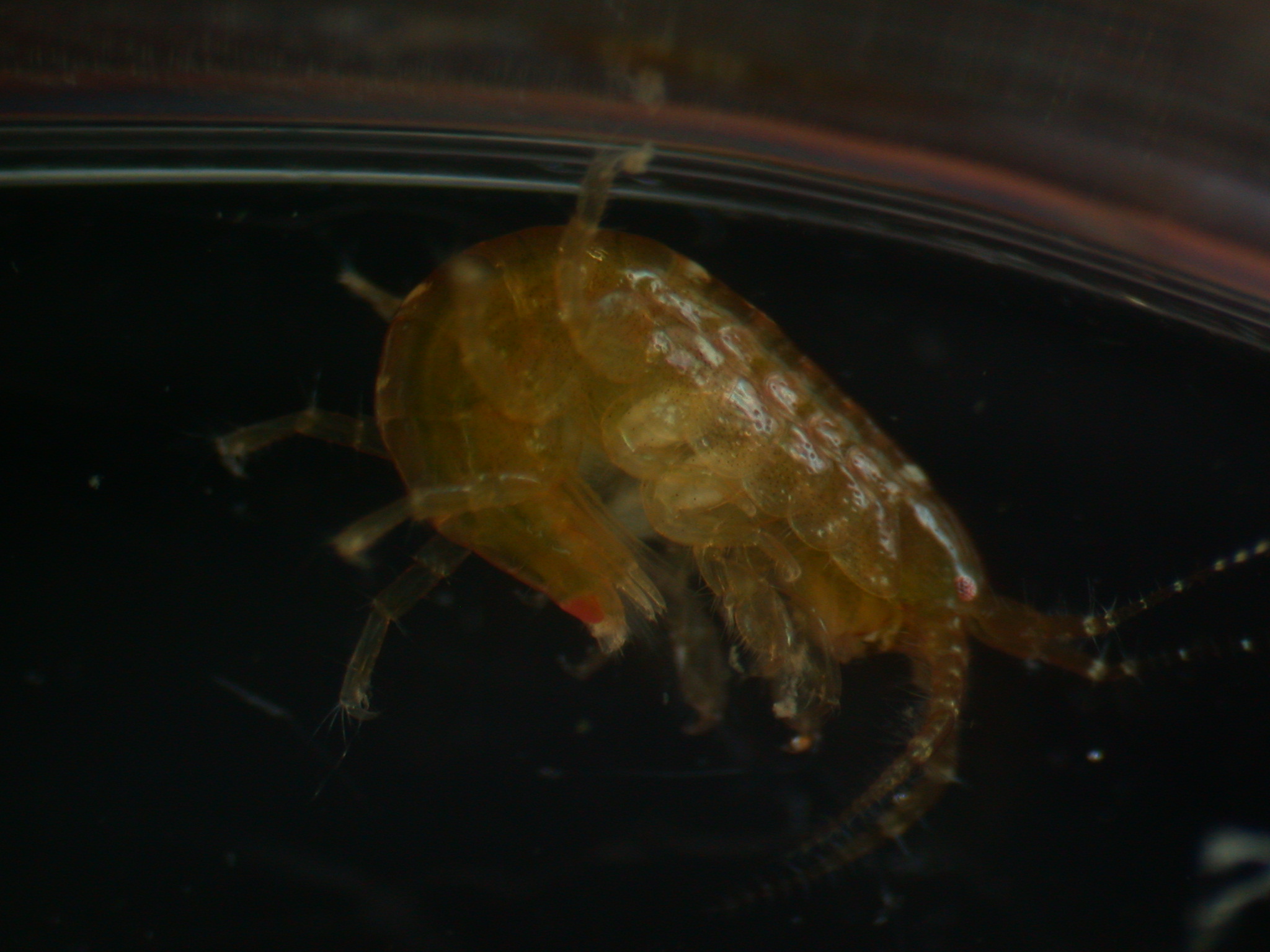A gammaridean amphipod was found among masses of sargassum in Oshoro Bay, Hokkaido, Japan, about 43°12′N, 140°51′E, on 6 June 2011 by Maho Ikoma, photographed and identified by Hiroshi Kajihara as Gammaridea sp, and fixed in 99% EtOH. DNA was extracted from the body using the silica method (Boom et al. 1990) with some modifications. Extracted DNA was dissolved in 40 µl of deionized water.
Results
PCR amplifications of mitochondrial cytochrome c oxidase subunit I gene (COI) using LCO1490 (5′-GGTCAACAAATCATAAAGATATTGG-3′) and HCO2198 (5′-TAAACTTCAGGGTGACCAAAAAATCA-3′) (Folmer et al. 1994) and nuclear 28S rRNA gene using LSU5 (ACCCGCTGAAYTTAAGCA) and LSU3 (TCCTGAGGGAAACTTCGG) (Littlewood 1994) were unsuccessful.
Taxonomy
Phylum Arthropoda
Class Crustacea
Order Amphipoda
Gammaridea sp.
(Figs 1, 2)

Fig. 1. Gammaridea sp. (ICHU22090162), overall view.

Fig. 2. Gammaridea sp. (ICHU22090162), head.
References
Boom, R., Sol, C. J. A., Salimans, M. M. M., Jansen, C. L., Wertheim-van Dillen, P. M. E., and van der Noordaa, J. 1990. Rapid and simple method for purification of nucleic acids. Journal of Clinical Microbiology 28: 495–503.
Folmer, O., Black, M., Hoeh, W., Lutz, R. and Vrijenhoek, R. 1994. DNA primers for amplification of mitochondrial cytochrome c oxidase subunit I from diverse metazoan invertebrates. Molecular Marine Biology and Biotechnology 3: 294–299.
Littlewood, D. T. 1994. Molecular phylogenetics ofcupped oysters based on partial 28S rRNA gene sequences. Molecular Phylogenetics and Evolution 3: 221–229.